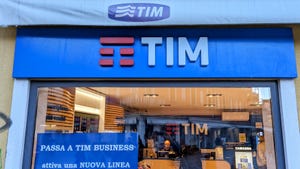Broadband InfoVision Awards: Broadband Home Award update from September 2012
With just six weeks to go until the winners of this year's Broadband InfoVision Awards are announced, we preview the shortlisted entries for the category Broadband Home.
September 7, 2012

With just six weeks to go until the winners of this year’s Broadband InfoVision Awards are announced, we preview the shortlisted entries for the category Broadband Home.
This award recognises an excellent product, service, device or innovation in the area of the Broadband Home by a telecom solutions vendor or a broadband operator/service provider (fixed or wireless) launched between July 2011 and June 2012 which offered significant new prospects for increased revenue, managing costs, improving quality or increasing customer satisfaction.
First up is Geneva-based firm Advanced Digital Broadcast (ADB), which has been nominated for its Epicentro Software Platform, an advanced software platform which has been designed to manage the whole home network, activate services on new devices, and highlight and fix issues before the end-user even realises a problem existed.
Epicentro enables operators to overcome the challenges of the current fragmented connected home model which covers several industries (including consumer electronics, operators, over-the-top and verticals), and allows service providers to control, provide and upgrade the multi-vendor devices and services installed at their subscribers’ homes.
The software platform also enables operators to build valuable business partnerships with vertical providers (e.g. M2M, energy management, home automation) as it allows proprietary devices to interoperate within the managed connected home environment using the home gateway and the STB as hosting platforms.
New Zealand telco CallPlus Services has been nominated for its unlimited broadband plans – a novelty in the local market, which relies on a single fibre provider (Southern Cross) to connect it to the rest of the world, and thus suffers from bandwidth costs in the range of US$60/Mbps.
The country’s third-largest ISP, CallPlus launched an unlimited broadband plan in 2011 for US$ 50 per month, deploying deep packet inspection appliances from Cisco at the entry and exit points to its network and creating an automated script which mathematically calculates demand real-time, and dynamically adjusts bandwidth available to avoid any burst charges with its upstream provider.
CallPlus also deployed Oversi caches to localise the delivery of P2P and streaming traffic, its own Steam cache to localise the delivery of gaming content, Bluecoat Cacheflow 5000 caches to localise HTTP and streaming content, and used Google and Akamai Caches to localise content delivered by them. Together, these initiatives reduced its IP Transit requirements by an impressive 40 per cent.
The Digital Living Network Alliance (DLNA) has been shortlisted for its work on making the fully-connected digital home experience a reality through the DLNA Certified programme. This certification indicates that a device has been proven to “plug-and-play” with other DLNA-certified devices, enabling easier sharing of digital video, photos and music throughout the home network, wired or wirelessly, via Ethernet, Wi-Fi and optional MoCA.
The DLNA has already certified tens of thousands of device models from the world’s leading manufacturers, including: TVs, storage devices, mobile phones, tablets, cameras, printers, game consoles, PCs, photo frames, media adapters, set-top boxes, AV receivers, Blu-ray disc players and many other products. DLNA also recently began certifying software that is sold directly to consumers through retailers, websites and mobile application stores.
Chinese telecoms equipment vendor Huawei Technologies has been nominated by the judging panel for its Huawei Hybrid Video Solution, designed to enable broadband network operators to deliver video services to more users in more flexible ways, by providing a consistent and persistent end-user experience, across converging multi-device, multi-network environments.
In areas covered by an operator’s managed IP network, video can be delivered via high quality IPTV; outside this footprint, video can be delivered in HTTP adaptive streaming or downloaded. Moreover, traditional broadcast channels from satellite, terrestrial or cable are also available on the hybrid STB and shown in the mixed channel list together with IP-delivered channels.
The solution also includes the E-Home Center, Huawei’s smart set-top box, and companion device applications for both Android and iOS based smartphones and tablets, allowing users to manage, enhance and personalise their TV experience from a second screen. Based on an advanced media cloud architecture, Huawei’s Hybrid video solution can support more than 10mn customers.
French firm Sagemcom Broadband has been nominated for the Sagemcom F@ST 3965 Home Gateway, built around a native IPv6 core, which combines wire-speed access (supporting ADSL as well as all VDSL profiles), true Gigabit Ethernet to Gigabit Ethernet routing for fibre deployments, and two high-performance wireless interfaces – a 2.4GHz and also a 5GHz video-grade wireless interface for IPTV transport over the air.
The unit includes DLNA server capabilities (see above), and Sagemcom’s latest HG6 middleware to manage back-up or synchronisation of local media files with cloud based-content, enabling content on the hard disk to be automatically duplicated in the cloud.
The Sagemcom F@ST 3965 also supports unified voice services on all voice interfaces: local FXS, integrated DECT CAT-iQ interfaces and associated handsets, SIP phones of softphones available on LAN. A SIP proxy is implemented to offer those voice services across all interfaces, targeting mainly business applications.
French firm SoftAtHome (backed by Orange, Sagemcom and Etisalat) has been shortlisted for its CloudAtHome software solution, which provides operators with an easy-to-deploy software solution on both managed and retail devices that make it simpler for subscribers to transparently access and control content distributed between the home devices and the cloud. And since all the services are exposed as Web Services, they can be accessed by any device running HTML5 including set-top boxes, connected TV, mobiles and tablets through a new unified user experience.
CloudAtHome is made up of two main components: a cloud-based component that is deployed in an operator’s network, backing up up home content, aggregating content coming from the backup and from the network, and preparing it for access by different devices; and a home-based component that can be deployed on different managed devices in the home (including the home gateway and set-top boxes) depending on the operator’s choice and strategy.
The home-based component contains all the home-based features that are best hosted on the home side, including the following services: aggregation of content coming from different devices in the home LAN using DLNA technology; preparation for cloud back up with privacy and profiling rules; and preparation for access of content in the cloud by multiple and different home devices.
Finally, Technicolor (another French firm) has been lauded by the judges for its new Connected Home software suite and distributed framework, which it has codenamed Revolution (n.b. a new name will be chosen for its commercial launch).
The result of extensive development work, Revolution enables service providers to deploy services to a maximum number of customers, transparent of the hardware deployed – meaning that the life-cycle of applications or services in Revolution is independent of the lifecycle of the hardware. Services run independent of ecosystems, operating systems and networks (even in the cloud), and applications developed once run on any device.
Revolution is already under validation with some major service providers, and field trials are being rolled out at this very moment, and are expected to soon result in a massive roll-out and upgrade in existing customer premises equipment (CPE) in the field.
For more information on this year Broadband InfoVision Awards and to register, please visit http://www.broadbandworldforum.com/awards/about-the-awards/
About the Author
You May Also Like










.png?width=300&auto=webp&quality=80&disable=upscale)


_1.jpg?width=300&auto=webp&quality=80&disable=upscale)